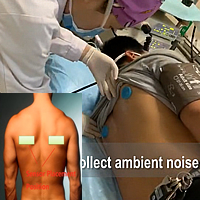
Using breath sound data to detect intraoperative respiratory depression in non-intubated anesthesia
Wang, Sikai; Zhao, Kang; Liu, Ming; Jiang, Hanjun; Wang, Zhihua; Zhang, Zongwang; Kan, Huili; Chen, Ping; Zhu, Binjie
Sci China Inf Sci, 2021, 64(3): 134101
Respiration is a vital function for every living thing. In clinical practice, any form of the respiratory dysfunction, if not detected and corrected in a timely manner, will have serious consequences. Conventional methods of monitoring the respiratory conditions of patients undergoing non-intubation anesthesia include stethoscope auscultation and peripheral capillary oxygen saturation SpO2 monitoring. SpO2 monitors the saturation of peripheral capillary hemoglobin, and its decrease indicates the occurrence of hemoglobin desaturation. However, hemoglobin desaturation has a time lag with respect to the occurrence of respiratory depression, and may occur later than respiratory depression. In recent years, thoracic electrical bio-impedance (TEB) has been developed for respiratory monitoring in non-intubated anesthesia. It has been shown to be effective, but when the impedance technique is used for respiratory monitoring, disturbances of the blood flow to the heart and the large blood vessels in the chest can be significantly disturbed. It has been shown that in specific populations, such as obese patients, the accuracy of the impedance method for the estimation of respiratory rate is lower than that based on acoustic sound estimation. Breath sound auscultation is one of the best ways to monitor respiratory conditions. Because of the non-invasive nature of auscultation, and its low cost, it is an intuitive, valuable monitoring method to replace previously described methods for monitoring respiratory conditions during non-intubation anesthesia. Many research groups have studied the classification of normal and abnormal breath sounds, and some research groups have focused on the preprocessing of breath sound data, including the use of de-noising filters, multi-channel data fusion, and visualization of breath sound analysis results. In general, however, the current research field of breath sound data processing is still immature, and the data used are rarely of clinical origin. The problem addressed in this study is the use of breath sounds to detect respiratory depression after anesthetic injection in non-intubation surgery.